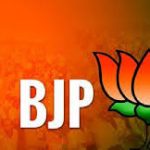 By Nageshwar Patnaik in Bhubaneswar, November 20, 2023: Poll fever has begun gripping the nation with election to five state assemblies already in full gear and the year will end with new governments in these states. The ongoing assembly elections are rightly described as a “dress rehearsal” before the 2024 general elections.
By Nageshwar Patnaik in Bhubaneswar, November 20, 2023: Poll fever has begun gripping the nation with election to five state assemblies already in full gear and the year will end with new governments in these states. The ongoing assembly elections are rightly described as a “dress rehearsal” before the 2024 general elections.
The outcome will be significant for Prime Minister Narendra Modi as he seeks a third consecutive term for his government early next year even as various surveys have pointed out that the assembly polls do not necessarily reflect the mood of the nation, which will come into play in the Lok Sabha polls.
However, since the assembly results will also sharpen the evolving, but glaring, ideological differences between the saffron camp, and the opposition forces including regional parties, they will likely have a much bigger impact on the Lok Sabha polls than what is being touted by experts in recent weeks.
For Modi and the Bharatiya Janata Party (BJP); next year’s general election may not turn out to be a roller-coaster ride. Nobel Laureate Amartya Sen recently said in an interview that it “would be a mistake” to think that the 2024 Lok Sabha election would be a one-horse race in favour of the BJP, and felt that the role of a number of regional parties would be “clearly important” for the upcoming general election.
With the next Lok Sabha elections just a couple of months away, the mainstream parties Congress and BJP have earnestly begun the exercise of courting regional parties to bolster their chances at the hustings. While Congress is upbeat due to the Karnataka victory and fervent activism of Rahul Gandhi, BJP does not want to be complacent in the wake of anti-incumbency and voter fatigue.
In Chhattisgarh, Madhya Pradesh and Rajasthan, the battle of ballots is a straight bipolar contest between the BJP and the Congress with the opposition alliance INDIA virtually taking a backseat. However, in Telangana and Mizoram, the regional parties in power, Bharat Rashtra Samithi (BRS) and Mizo National Front (MNF) are battling out to retain power.
The Congress successfully defeated the BJP and won Chhattisgarh, Madhya Pradesh as well as the Rajasthan assembly elections in 2018, but that did not translate into any gains for the party five months later in the 2019 general elections. The Congress managed to win only three of the 65 Lok Sabha seats in these three states.
 Though the BJP had lost the 2018 polls in Madhya Pradesh by a narrow margin after 15 years in power and worked behind the scenes to get the then Madhya Pradesh chief minister Kamal Nath’s colleague, Jyotiraditya Scindia, to defect to the BJP. It then overturned the mandate to form the government with Shivraj Singh Chouhan as chief minister. Kamal Nath is now desperate to form a government in the state after the BJP unseated him as chief minister in 2020.
Though the BJP had lost the 2018 polls in Madhya Pradesh by a narrow margin after 15 years in power and worked behind the scenes to get the then Madhya Pradesh chief minister Kamal Nath’s colleague, Jyotiraditya Scindia, to defect to the BJP. It then overturned the mandate to form the government with Shivraj Singh Chouhan as chief minister. Kamal Nath is now desperate to form a government in the state after the BJP unseated him as chief minister in 2020.
In the 2018 election, the Congress had won 68 seats in Chhattisgarh. The dethronement of Raman Singh, the three-time CM, and the overthrow of the incumbent BJP were seen as a big victory for the Congress as the results were contrary to what had been predicted by opinion and exit polls. Since the formation of Chhattisgarh in November 2000, the Congress had never before won an election in the state. Since 2003, the BJP has consistently won elections, with Raman Singh serving as the CM.
Similarly, the Congress defeated the Vasundhara Raje-led BJP government in the 2018 election to Rajasthan assembly. The Congress had emerged as the single-largest party, missing a majority by just one seat. With only 73 seats won, the BJP fared poorly in comparison to the last election. In the ongoing Assembly election, the stage is set for a head-to-head battle for the 2023 Rajasthan election, with the BJP and the Congress vying for victory.
In Telengana, K Chandrashekar Rao headed Telangana Rashtra Samithi, now known as the BRS, won 88 seats in the 2018 election. Since Telangana’s creation as an independent state from Andhra Pradesh, KCR has maintained uncontested rule in the region. In 2023, they also want to stave off the BJP’s upsurge and fulfill KCR’s vow to replace the NDA as the main Opposition in the 2024 election.
The northeastern state of Mizoram is witnessing tight contest between the regional MNF – which is currently leading the state, the Zoram Peoples Movement (ZPM), the Congress, and the BJP. In 2018, MNF bagged 26 of the 40 member-assembly seats, while the ZPM got eight seats. The Congress had bagged five seats and the BJP managed to win one seat.
Indian Politics has transformed in the past decade. It is true that BJP being the dominant party occupies centre stage in the nation’s polity. The presence of two national parties across all states gives the impression of a homogenous ideology across all units. But the regional parties are thriving as they are equipped to better understand local needs ad tailor policies accordingly. Caste has remained a strong force in Indian politics.
 Indian states are diverse in their geographic, demographic, and cultural composition, which not only creates demand for a distinct style of governance but also allows parties with distinct ideologies and policy positions to succeed. Overall, there is high support for caste-based reservation across parties in India. Parties are also divided in their views and support of certain social issues that vary across states and their unique societies. Nonetheless, caste has remained a strong force in Indian politics.
Indian states are diverse in their geographic, demographic, and cultural composition, which not only creates demand for a distinct style of governance but also allows parties with distinct ideologies and policy positions to succeed. Overall, there is high support for caste-based reservation across parties in India. Parties are also divided in their views and support of certain social issues that vary across states and their unique societies. Nonetheless, caste has remained a strong force in Indian politics.
The aggressive expansion of the BJP has led to the shrinkage of the political space and bargaining powers and in the changing context, the regional parties are repositioning themselves on major socio-political issues to ensure their electoral success in the coming polls.


Leave a Reply
Be the First to Comment!